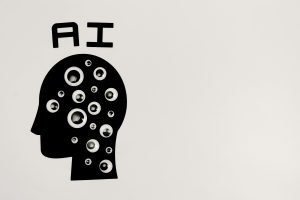Key Takeaways
-
AI tools can be helpful, but they can’t replace the emotional depth of a trained human therapist.
-
The question of whether AI can truly provide empathy and human connection is central to understanding its limitations.
-
Therapy is built on shared emotional experiences, which AI lacks.
-
Concerns around whether AI is safe and private for sensitive discussions are still valid and evolving.
-
Real healing—especially for emotional or relationship health—requires a human presence that can respond with genuine understanding and care.
As a practicing individual and couples therapist, I am observing along with the world, the way AI is rapidly changing how we live, work, and even support our mental health. With accessible chatbots, it’s never been easier to ask questions or get feedback on anything within seconds. But when it comes to deep emotional healing, there’s an important question we need to ask ourselves:
Can AI can truly provide empathy and human connection?
While AI can simulate helpful conversation patterns or guide users through pre-programmed coping tools, it lacks the ability to genuinely feel or relate. Emotional healing isn’t just about receiving the “right” answer—it’s about being seen, heard, and held by someone who has the capacity for real empathy. That emotional resonance is something even the most advanced algorithms can’t replicate. There is no place for relatability, self disclosure or the real emotional experience generated between two people interacting on deeper and personal matters.
genuinely feel or relate. Emotional healing isn’t just about receiving the “right” answer—it’s about being seen, heard, and held by someone who has the capacity for real empathy. That emotional resonance is something even the most advanced algorithms can’t replicate. There is no place for relatability, self disclosure or the real emotional experience generated between two people interacting on deeper and personal matters.
A big part of therapy is the subtle, often wordless communication between two people. A slight shift in posture, a tear, a long pause—these are deeply human moments that build trust and insight. AI, for all its intelligence, lacks these cues. It also lacks the warmth and unpredictability of a real relationship. And for those struggling with self-esteem , grief, trauma, or anxiety , that lack of shared experiences may start to feel isolating rather than supportive over time.
In the article, Exploring the Dangers of AI in Mental Health Care :
A new Stanford study reveals that AI therapy chatbots may not only lack effectiveness compared to human therapists but could also contribute to harmful stigma and dangerous responses.
In summary, across different chatbots, showed stigma over certain mental health conditions over others, ultimately clearly not supportive to some people. Even more potentially dangerous, they found some chatbots missed critical nuances around suicidal ideation. For someone in the helping profession like myself, this is deeply concerning.
Your most private concerns may not be so private.
Another concern is whether AI is safe and private for sensitive discussions. While some platforms offer encryption and claim high security standards, data breaches, third-party access, or unclear usage policies still pose risks. Trust is the foundation of any therapeutic relationship, and users should feel confident their deepest concerns won’t be misused or exploited by a machine, its creators or other bad actors gaining unauthorized access. Understand that the queries and conversations all live on a link. This is a problem that will likely soon start to reveal itself in very public ways and it’s a bit unnerving to know that many may not realize that their “private” chats with their AI companions are not necessarily private.
 In addition to privacy, there’s a question of nuance. AI responses are based on data and patterns, not lived experience. That matters. A human therapist brings insight informed by years of training, but also by being human—by facing their own challenges, personal growth and own expanding empathy. When someone feels misunderstood or alone, they don’t just need advice. They need someone who gets it, who has possibly felt the depth of emotion themselves, and can bear witness to their experience.
In addition to privacy, there’s a question of nuance. AI responses are based on data and patterns, not lived experience. That matters. A human therapist brings insight informed by years of training, but also by being human—by facing their own challenges, personal growth and own expanding empathy. When someone feels misunderstood or alone, they don’t just need advice. They need someone who gets it, who has possibly felt the depth of emotion themselves, and can bear witness to their experience.
This is also important in the context of relationship health. Couples therapy, for instance, requires balancing two emotional realities at once, interpreting complex interactions, and helping clients find emotional safety together—while guiding them toward healthier communication. AI might offer generic advice, but it cannot deeply attune to two nervous systems in the way a skilled therapist can.
None of this is to say AI doesn’t have a place in mental health. It can be a highly useful complement—helpful for scheduling, journaling prompts, quick check-ins, or access to psychoeducation. But when it comes to emotional health, it should support—not replace—the human connections we rely on for healing.
Ultimately, emotional transformation is relational at its core. We grow in the presence of another, not in isolation. And no matter how fast or convenient AI becomes, it cannot replicate the healing power of being in a room (or on a screen) with someone who truly sees us. That’s the difference. That’s the irreplaceable human element.
I am able to feel what transpires between me and my clients, whether individuals or couples. It’s real. It’s felt. One thing I will always have over a machine in the world of therapy or my chat consultation service is – I am human.
FAQ: AI and Therapy
Why is human connection so important in therapy?
Healing happens through connection. Shared emotional experiences and the ability to feel seen and validated are essential—something AI isn’t capable of replicating.
Is it ever okay to use AI for mental health support?
Yes. It can be helpful for journaling, habit tracking, or light guidance. But for trauma, grief, or relationship issues, it’s best to seek human support.
How do I find the right therapist for emotional or relationship health?
Look for someone trained in your area of need. Word-of-mouth, search engines and therapy directories are good places to start. Reach out to a few and speak to them to assess fit of theoretical orientation, personality and style.
The post Why AI is Not a Replacement for Therapy appeared first on Love And Life Toolbox .
The authors at Intimate Tickles found this article to be quite interesting, and we though you might like it as well. This articles was originally posted at loveandlifetoolbox.com by Lisa Brookes Kift, MFTRead This Awesome Article In It's Entirety At It's Original Location



